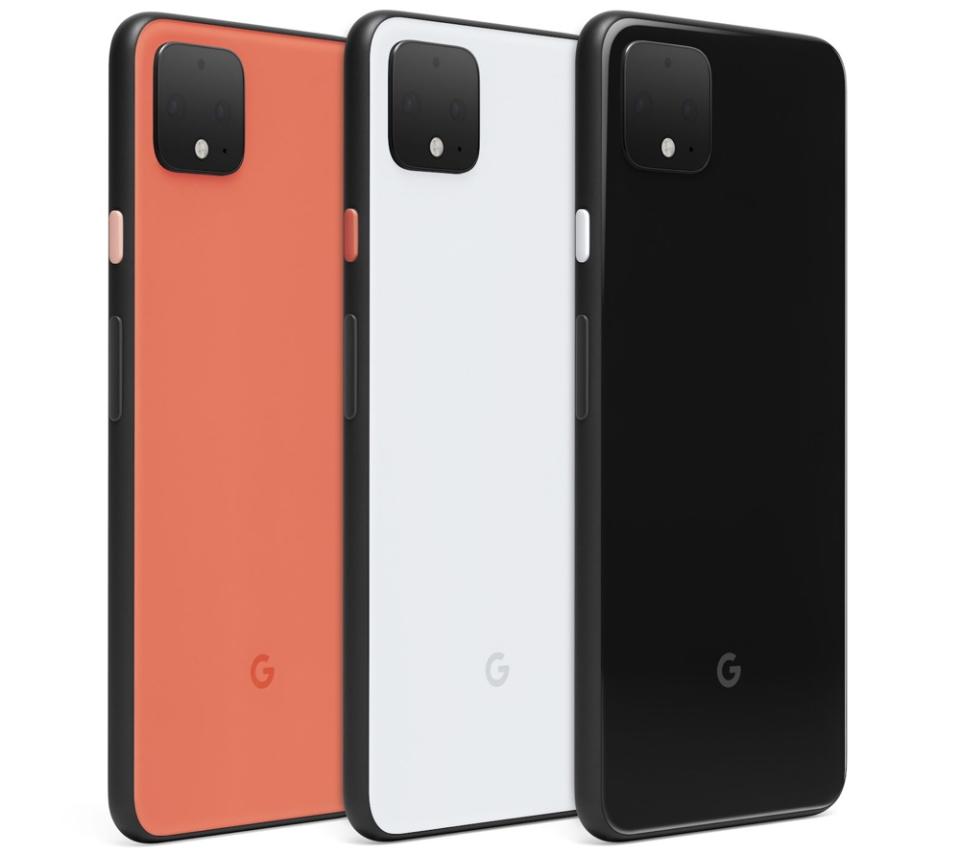Google unveils Pixel 4 and Pixel 4 XL smartphones with enhanced cameras
Google (GOOG, GOOGL) on Tuesday unveiled its new Pixel 4 and Pixel 4 XL smartphones at its Made by Google event in New York. Available Oct. 24 for $799 and $899, respectively, the Pixels are designed to take on Apple's iPhone 11 and Samsung's Galaxy S10 lines of devices.
Google's latest phones, like Apple's (AAPL) iPhone, are all about camera improvements. Both new Pixels now have two cameras compared to the single camera setup found on the Pixel 3. The company has also added some software tricks that allow you to finely control the look of your shots.
A new radar feature with Face Unlock similar to Apple's Face ID is also in the offering. Out of the box, the 5.7-inch Pixel 4 and 6.3-inch Pixel 4 XL certainly look like some impressive phones. The question remains: Will they prove to be big sellers for Google?
Big camera changes
The Pixel 4 and Pixel 4 XL both come with two new rear cameras. There's the standard wide-angle camera, as well as a telephoto camera that allows you to zoom in on your subject using the camera's lens. Optical zooming like this lets you capture distortion-free images because it uses the camera's lens to zoom rather than software tricks.
Google's Pixel 3 proved that the company is capable of offering some of the best cameras in its smartphones. The Night Sight feature Google unveiled with the Pixel 3 was a software feature that let the Pixel 3 capture multiple shots and merge them into a single image that produced bright, clear images taken in low-light settings.
With the Pixel 4, Google is introducing the ability to manipulate the intensity of light and shadows in your photos in real time, before you take them. The feature should prove especially helpful in situations where the lighting is uneven like during sunsets.
The cameras are housed in a square in the top left corner of the Pixel 4, a setup that looks similar to the iPhone 11's camera housing. It's interesting to see that Google opted not to include a third camera on the Pixel 4, something that Apple and Samsung, as well as other major smartphone makers, now offer.
Face Unlock and radar

With the Pixel 4 and Pixel 4 XL, Google is ditching the fingerprint reader found on previous versions of the company's phones, and instead moving forward with its own face unlock feature. Like Apple's Face ID, Google's Face Unlock will let you unlock your phone with, well, your face. Google says its Face Unlock is the fastest face unlocking feature of any smartphone. That’s because the new motion sensing feature that takes advantage of the company’s Soli radar sensor can determine when you’re picking up the phone, and prepare it for unlocking.
The feature requires a slew of sensors that are embedded at the top of the phone's front panel. It's also why the top bezel on the phone is larger than the bottom bezel. It's a welcome addition to the Pixel, and hopefully it works as quickly and consistently as Apple's Face ID.
Samsung has its own kind of facial recognition technology, but unlike Face ID, it's always been too finicky to replace the company's fingerprint readers. Google's approach to Face Unlock is similar to Apple's in that it projects a series of invisible dots onto your face that the phone is then able to use to determine you're the person using your phone.
The Soli sensor can also recognize precise hand gestures, which lets you do things like raise the volume on your phone, change songs, and manipulate other functions without ever having to touch the device.
The Google assistant is now more integrated into the Pixel 4’s Android 10 operating system. So you can squeeze the sides of the Pixel 4, ask your question, and complete entire procedures like opening apps and running through them, sharing items with friends, etc. all without having to swipe through apps.
Design and performance
The Pixel 4 and Pixel 4 XL are both available in a variety of colors and have the same design with edge-to-edge displays, and the aforementioned large bezel up top. The display on the Pixel 4 measures 5.7 inches, while the XL gets a 6.3-inch panel.
The larger screen gets a higher resolution QHD panel, while the smaller one gets a full-HD screen. Both, however, get Google's new Smooth Display branding, which means the screens will have a 90Hz refresh rate, which will help ensure on-screen movement and animations are cleaner and don't have any hiccups. In other words, smooth.
That can be especially helpful when gaming on the Pixel 4, as games running at higher frame rates generally look better than those running at slower frame rates.
Inside, the Pixel 4 and Pixel 4 XL each get Qualcomm's Snapdragon 855 processor and 6GB of RAM. Storage options include 64GB or 128GB of on-board space.
In terms of battery life the Pixel 4 XL gets a 3,700-mAh battery, while the Pixel 4 gets a 2,800-mAh unit.
Google's Pixel line has an almost cult-like following among Android fans, but that hasn't translated to sales to the wider public. We'll have to see if the Pixel 4 and Pixel 4 XL can change the company's smartphone fortunes in the coming month.
More from Dan:
Email Daniel Howley at [email protected]; follow him on Twitter at @DanielHowley.
Follow Yahoo Finance on Twitter, Facebook, Instagram, Flipboard, SmartNews, LinkedIn,YouTube, and reddit.
